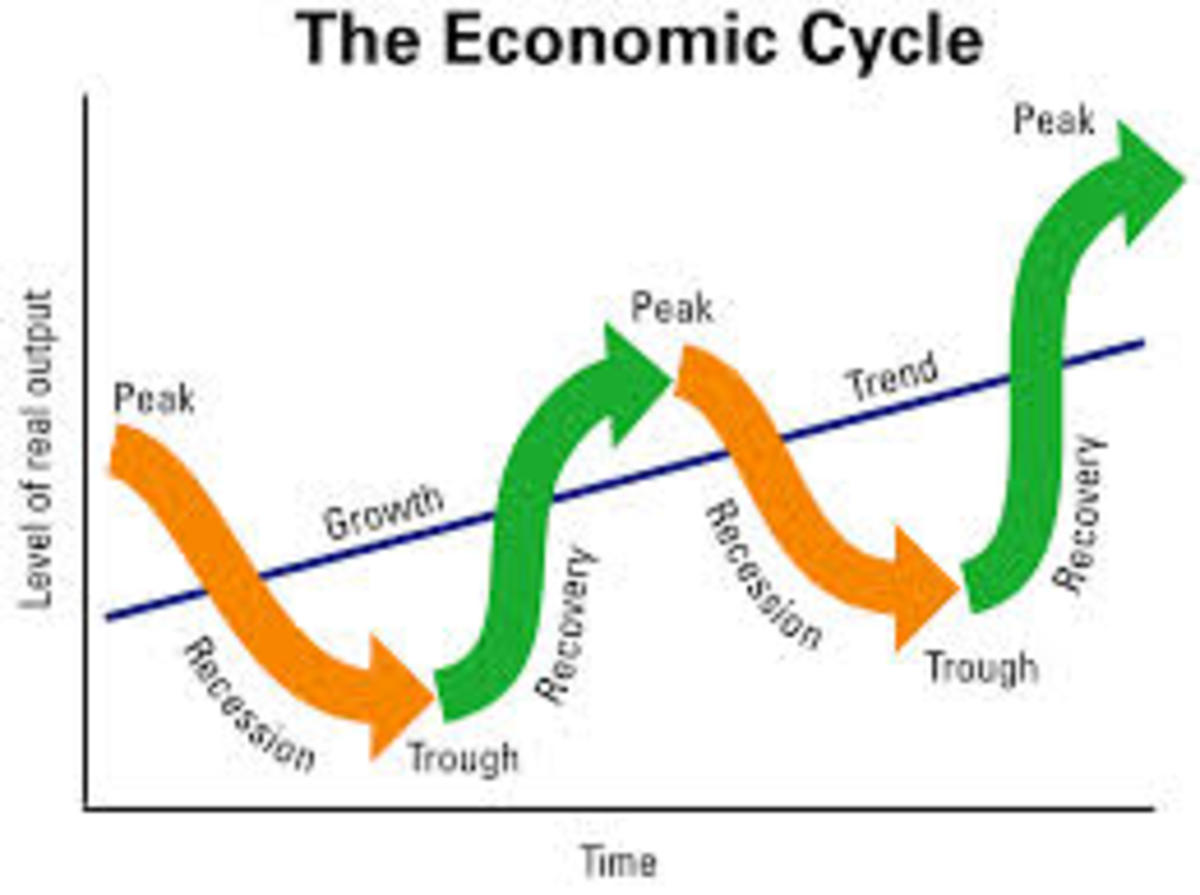Business Cycle
What You Need to Know About Business Cycle
Economic growth never happens in a straight line. It is more like a series of ups and downs, known as business cycle. If you understand a business cycle, it becomes easier to make financial decisions. Whether you want to invest or start a new business, business cycles are the most fundamental things to know about. A deep understanding of the business cycle will help you take the right steps at the right time. Let us learn about how the ups and downs of the economy affect investors, businesses, and households of an economy.
What is a business cycle?
In simple terms, a business cycle is the rise and fall in the growth of the economy. These ups and downs should be natural, not forced. You may say that a business cycle represents the fluctuations in an economy. There are definitive periods of expansions, followed by periods of recession. In the US, the official dates for these periods are defined by the National Bureau of Economic Research (NBER).
When an economy expands, it experiences positive phenomenon. There is rise in industrial sector, productivity is increasing, and personal income also rises. Consequently, spending, saving and investing increases in the economy. As this period is characterized by a steady inflation, people and businesses are encouraged to spend.
When the expansion period reaches its peak, it starts a downward spiral into the recession period. During this period, unemployment increases and income decreases as a result. GDP of a country may either fall or not move as anticipated. Industrial sector takes a hit. The economy reaches the lowest point, called the bottom of the trough. However, at this point, the expansion period starts again.
Stages of the business cycle
Though the cycle is divided into two periods of expansion and contraction, we focus on 4 stages of the cycle. They are- expansion and peak (positive growth) followed by recession and trough (sluggish growth or no growth).
In the expansion phase, we see a marked increase in the GDP of the economy. In general, expansion is considered to be a phase when the inflation rate hovers near 2 percent. In conjunction to this, the economy is growing at 2-3 percent per annum. Hence, we can see that the GDP rises constantly. Unemployment rates usually remain around 4 percent. This is also considered to be the natural unemployment rate. In the stock market, you will experience a bullish trend. This shows that investors are confident about the economy and government is planning great policies.
A government used fiscal tools to keep the economy in the expansion phase. They may change the Fed rates and come up with quantitative easing to maintain this phase. The idea is to keep the economy growing at a steady pace while curbing inflation. However, when allowed to work freely, the economy will show signs of a burnout. That is when it enters the second phase.
The second phase is called peak. During this phase, the GDP growth rate is commendable. A 3 percent GDP growth may sound great but it actually shows signs of a burnout. The inflation rates have also gone fairly beyond 2 percent. Sometimes, double digit inflation growth is seen. Bullish investors from the expansionary phases are now creating asset bubbles. You can see unnecessary optimism in the market and the stocks are often overvalued. It is at the peak phase that the economy will enter a period of transition. It is no more a positively growing economy. Instead, it is entering the recessionary or contraction phase.
The third stage is contraction or recession, which is the exact opposite of the expansion phase. During this stage, economic growth becomes very sluggish. The GDP growth rate, bustling in the expansion phase, goes below 2 percent. After an asset bubble burst, the investors become very cautious because of which they create a bearish market. Inflation rates either don’t rise or remain stagnant. Sometimes, they may fall below 2 percent as well. In the later stages of this phase, you will also notice companies shutting down or laying off staff in large numbers. Unemployment rates rise steeply during the end of this stage. Businesses and investors often wait for this phase to get over to start investing again.
Finally, the cycle enters the trough stage. It is a time when the cycle moves towards expansionary phase once again. Unemployment rates start going down and businesses are encouraged to start producing and hiring. The investors also start showing more confidence in the market. Mostly, these phases are not very severe and can be managed effectively with good government programs. However, mismanagement or policy failure can lead to extremities. In such cases, the peak and trough can be located very farther apart from each other which makes recovery difficult.
Business cycles in America
Since 1945, the US has witnessed 11 business cycles. One business cycle lasts about 69 months in the US. In June 2009, the last expansion in the US economy commenced. The good news is that in American economy, expansion lasts for 58.4 out of 69 months. Recessions are shorter but they must happen in order to curb the market from burnout. They are also necessary to avoid over optimism in the market. If an economy is allowed to expand continuously without a recession, inflation rates will go out of control. The stock market will be specifically affected as securities will be significantly overpriced.
Expansion and recession help an investor in planning his capital allocation. During expansion, you can enjoy increased returns. However, during recession, you can invest in value assets which will be providing better returns in the future. It makes sense to buy more securities at a lesser price during recession than to buy lesser securities at a higher price during expansion. The US economy is currently experiencing a bullish market with overvalued stocks. If value investment is your forte, then you must get ready to buy some truly valuable stocks for a smaller price by 2018.






